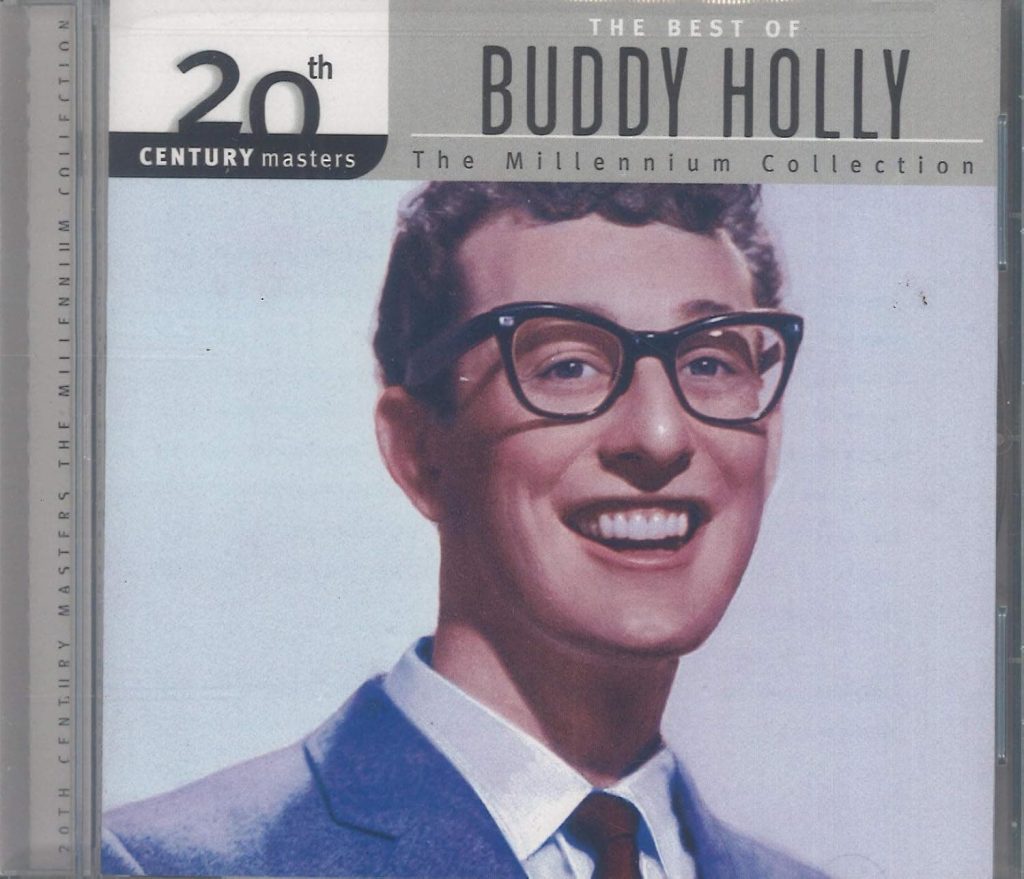
Buddy Holly – “That’ll Be the Day”: A Rock ‘n’ Roll Classic That Defined an Era
Released in 1957, “That’ll Be the Day” by Buddy Holly and the Crickets stands as a landmark in the history of rock ‘n’ roll. Written by Buddy Holly and Jerry Allison, the song became an anthem for youthful rebellion and self-assurance, with Holly’s distinctive vocals and catchy guitar riffs giving it a fresh and iconic sound. The track climbed to #1 on the Billboard Hot 100, establishing Holly as a pioneer of the genre and an enduring influence on countless musicians to come. With its memorable hook, infectious rhythm, and Holly’s unmistakable hiccup-styled vocals, “That’ll Be the Day” remains one of rock music’s timeless classics.
The origins of “That’ll Be the Day” trace back to a memorable line from the 1956 John Wayne film The Searchers. Wayne’s character famously repeats the line, “That’ll be the day,” and Holly and Allison, inspired by the phrase, used it to build the core of their song. This simple line would transform into a defiant refrain, encapsulating both teenage confidence and a subtle sense of irony. In the song, Holly sings, “That’ll be the day when I die,” using the phrase to suggest an unshakable belief that his love will never let him go. It’s a catchy, confident line, delivered with an energy and boldness that was new to audiences in the late 1950s.
Musically, “That’ll Be the Day” is driven by Holly’s clean, rhythmic guitar work and the Crickets’ steady backbeat. The song features a rolling rhythm and an upbeat tempo, blending rockabilly elements with a bluesy feel that makes it both danceable and memorable. Holly’s lead guitar riff opens the song, capturing listeners’ attention right away, while his signature “hiccup” vocal style adds character and charisma. The Crickets’ backing harmonies give the song depth, adding to its catchy and playful vibe.
Lyrically, the song explores themes of love, loss, and resilience, common topics in early rock ‘n’ roll, but Holly’s delivery gives them a unique twist. There’s a sense of youthful cockiness in Holly’s voice, and he conveys both confidence and heartache, capturing the complexity of teenage love. This authenticity helped the song resonate with young audiences of the time, who were drawn to Holly’s relatable yet edgy persona. The lyrics are simple but effective, and Holly’s vocal inflections make every line feel personal, almost as though he’s singing directly to the listener.
“That’ll Be the Day” was recorded at Norman Petty’s studio in Clovis, New Mexico, where Buddy Holly and the Crickets had the creative freedom to experiment with their sound. Holly’s attention to detail and innovative recording techniques helped give the song its polished feel, setting a high standard for the production of rock music at the time. Holly was one of the first rock ‘n’ roll artists to truly embrace the role of a singer-songwriter-producer, giving him an influence that would extend well beyond his short career.
Upon its release, “That’ll Be the Day” quickly became a hit, reaching audiences across America and inspiring a new generation of musicians. Holly’s impact went global; The Beatles, in particular, cited Holly as a major influence, and they would go on to cover the song early in their career. His blend of rockabilly roots, innovative guitar work, and charismatic vocal style laid the foundation for the future of rock, and “That’ll Be the Day” remains a symbol of his groundbreaking contributions.
The song’s success was tragically cut short when Buddy Holly died in a plane crash on February 3, 1959—known as “The Day the Music Died”—alongside fellow rock ‘n’ roll stars Ritchie Valens and The Big Bopper. This loss was deeply felt across the music world, yet Holly’s legacy continued to grow. “That’ll Be the Day” remains an enduring anthem, celebrated for its pioneering spirit and its role in shaping the sound and style of rock ‘n’ roll.
In conclusion, “That’ll Be the Day” by Buddy Holly and the Crickets is a classic that has left an indelible mark on the music world. With its catchy refrain, engaging lyrics, and Holly’s captivating voice, the song is a timeless piece that captures the spirit of 1950s rock ‘n’ roll. Even decades after its release, it continues to inspire musicians and delight listeners, a testament to Holly’s lasting impact and the enduring power of a truly great song.